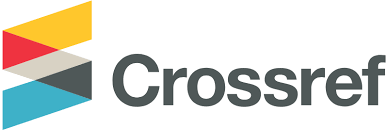ANALYSIS OF SMART TOURISM MODEL IN SOUTH TANGERANG CITY
Abstract
The tourism industry is one of the largest foreign exchange earners in Indonesia and is able to provide new jobs. Therefore, tourism is one of the most important sectors in Indonesia, including in the South Tangerang City. South Tangerang City has various tourism potentials ranging from natural tourism, educational tourism, historical tourism, to shopping tourism. One strategy that can be implemented to maximize tourism potential in the South Tangerang City and increase tourist visits is to utilize the application of information technology innovation, also known as the Smart Tourism concept. Smart Tourism can significantly change tourist behavior, number of visits, as well as the function and structure of the tourism industry. This research will discuss how the application of smart tourism in South Tangerang City based on three components, namely smart experience, smart business ecosystem, and smart destination, the impacts of smart tourism implementation, factors that influence the implementation of smart tourism, and strategic analysis of smart tourism model using the SWOT method to determine the relationship between external opportunities and internal strengths and between internal weaknesses and external threats. From this strategic analysis, a strategy will be produced that will be applied in the smart tourism model in South Tangerang City.
Keywords
Full Text:
PDFReferences
Blocher, E. J., Chen, K. H., & Lin, T. W. (2007). Manajemen biaya. Jakarta: Salemba Empat.
Ferdiansyah H., Endyana C., Rachmat H., Khadijah Ute L. S. (2020). Pengembangan Pariwisata Halal Di Indonesia Melalui Konsep Development of Halal Tourism in Indonesia Through Smart Tourism Concept. Journal of Sustainable Tourism Research, 2(1): 30–34.
Ghani, Y. A. (2017). Pengembangan Sarana Prasarana Destinasi Pariwisata Berbasis Budaya di Jawa Barat. Jurnal Pariwisata, 4(1), 22-31.
Liu, P., & Liu, Y. (2016, September). Smart tourism via smart phone. In International Conference on Communications, Information Management and Network Security. Beijing.
Moleong, L. J. (2007). Metodologi penelitian kualitatif edisi revisi.
Pavithra, K., Sharmila, L., Sivapriya, S., Swathi, U., & Sekar, S. (2019). Future Of Smart Tourism. Future, 6(02).
Redjeki, S., Faizal, E., Iskandar, E., Rosadi, D., & Mustofa, K. (2018, October). Model Sistem Wisata Integratif: Sebuah Pendekatan Smart Tourism di Kabupaten Bantul. In Seminar Nasional Teknologi Informasi dan Komunikasi (SEMNASTIK) (Vol. 1, No. 1, pp. 16-25).
Soekadijo, R. G. (2000). Anatomi pariwisata: memahami pariwisata sebagai" systemic linkage. Gramedia Pustaka Utama.Wibowo, Lili Adi. (2008). Usaha Jasa Pariwisata. Bandung: Universitas Pendidikan Indonesia.
Zhu, W., Zhang, L., & Li, N. (2014). Challenges, function changing of government and enterprises in Chinese smart tourism. Information and Communication Technologies in Tourism, 10, 553-564.
DOI: https://doi.org/10.36441/pariwisata.v4i1.413
Article Metrics
Abstract views : 678 times
PDF views : 648 times
Dimension Citation Metrics
Refbacks
- There are currently no refbacks.

This work is licensed under a Creative Commons Attribution-NonCommercial 4.0 International License.
Article Metrics
Abstract views : 678 timesPDF views : 648 times
Dimension Citation Metrics
Refbacks
- There are currently no refbacks.

This work is licensed under a Creative Commons Attribution-NonCommercial 4.0 International License.
Refbacks
- There are currently no refbacks.

This work is licensed under a Creative Commons Attribution-NonCommercial 4.0 International License.
Jurnal Industri Parawisata Indexed By:

This work is licensed under a Creative Commons Attribution 4.0 International License.










